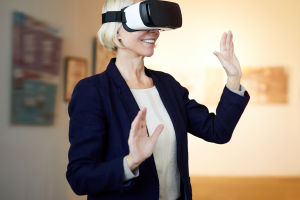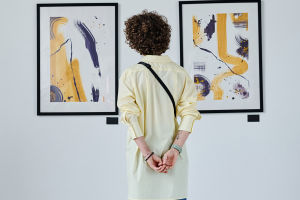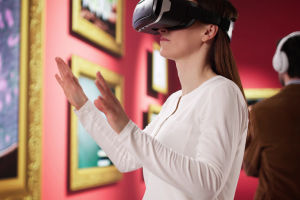Machines Judge Art
Hey Lykkers! Have you ever stood in front of a painting or listened to a song and thought, "Wow, this really hits me"? That feeling — whether it's joy, sadness, nostalgia, or pure wonder — is what makes art so special.
But here's a wild question: Can a robot or AI judge art the way humans do? Can it really get what makes a piece of art move us?
It's a fascinating question, especially as AI keeps getting smarter and creeping into every part of our lives. So let's dive in and talk about what it means to judge art, how AI looks at art, and whether it can truly match human emotions.
What Does It Even Mean to Judge Art?
When we say we're "judging" art, it's not just about whether something looks nice or messy. Judging art is about the whole experience. It's how colors, shapes, and lines come together, sure — but more importantly, it's about what the art makes us feel and think.
Every single person brings their own story, culture, memories, and mood to the art they experience. One painting might remind you of a happy memory, but for someone else, it might bring up something totally different. So art judgment is messy and deeply personal.
How Does AI "Look" at Art?
Now, AI doesn't have feelings or memories. Instead, it breaks down images into data points — think pixels, colors, patterns, edges, and shapes. It's been trained on thousands or millions of images, learning to recognize styles like Impressionism or Cubism and even identifying artists based on brush strokes.
Because AI can analyze so much data quickly, it can predict what features people tend to like — like symmetry, balance, or color harmony. For example, some AI programs can rate paintings based on how "pleasing" they might be, purely based on these technical features.
But here's the catch: AI's "judgment" is purely based on math, patterns, and statistics. It doesn't feel a painting or connect it to memories. It can tell you what it sees, but not how it moves someone emotionally.
Can AI Ever Feel Art?
That's the million-dollar question. Right now, AI can't experience emotions. It can't say, "This piece makes me feel happy" or "This music reminds me of my childhood". AI doesn't have a life, a past, or a heart — so it can't bring the messy, human stuff into art judgment.
Our emotional responses come from complex brain chemistry and personal experiences. They're unpredictable, subjective, and sometimes contradictory. AI's logic-based processes just aren't wired for that kind of nuance.
So Is AI Useless for Art?
Not at all! Even if AI can't feel art, it can help us appreciate it in new ways. For example:
- It can detect patterns across centuries of art, showing us connections between artists and styles we might miss.
- AI can help restore old or damaged paintings by filling in missing parts based on historical data.
- It can analyze huge collections and recommend artworks based on what you might like.
- AI-generated art can push human creativity by inspiring new ideas and collaborations.
In other words, AI can be a powerful tool — like a super-smart art assistant who helps us discover and understand art better, even if it doesn't experience it.
AI as an Artist: What's That Like?
Here's a fun twist: AI doesn't just judge art — it makes art too! You've probably seen AI-generated images or music clips that look or sound amazing. These are created by algorithms that remix patterns from tons of human-made art.
But remember — AI isn't creating from feelings or personal stories. It's mixing and matching data to generate something new. That's different from human artists who pour their soul, pain, joy, and history into their work.
The Bottom Line: Can AI Judge Art Like Humans?
Short answer: Nope.
AI can analyze, categorize, and mimic art styles, but it doesn't feel art like we do. Human art judgment is messy, emotional, and personal — something that simply can't be coded into an algorithm.
But AI's real power is in how it augments our experience. It can open new doors, help us discover forgotten artists, and even challenge what we think art is.
So next time you're moved by a painting or song, just remember — it's your uniquely human heart doing the real judging. AI might get smarter every day, but when it comes to art, feelings still rule the game.
Copyright © zogu 2021 - 2025. All Right Reserved.


